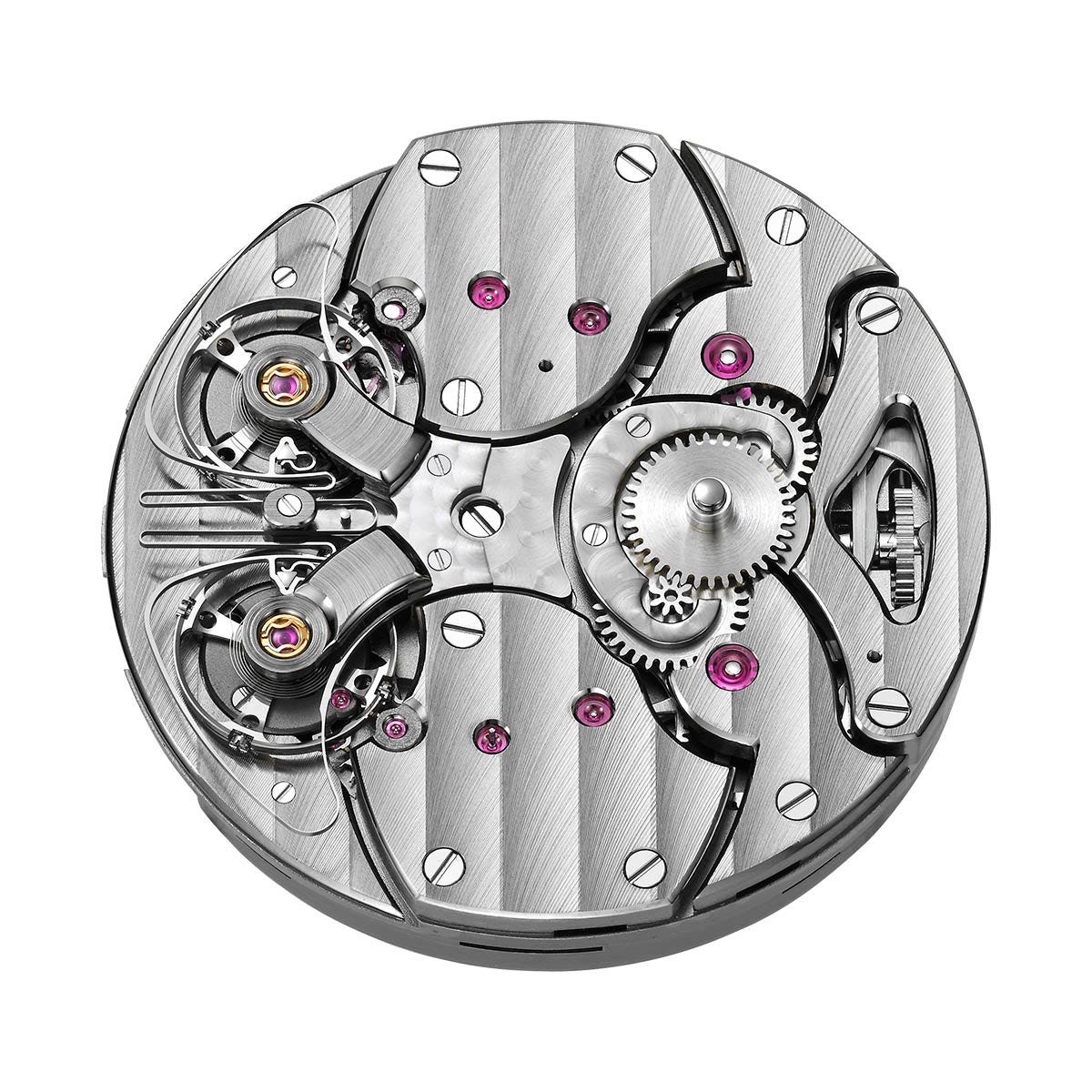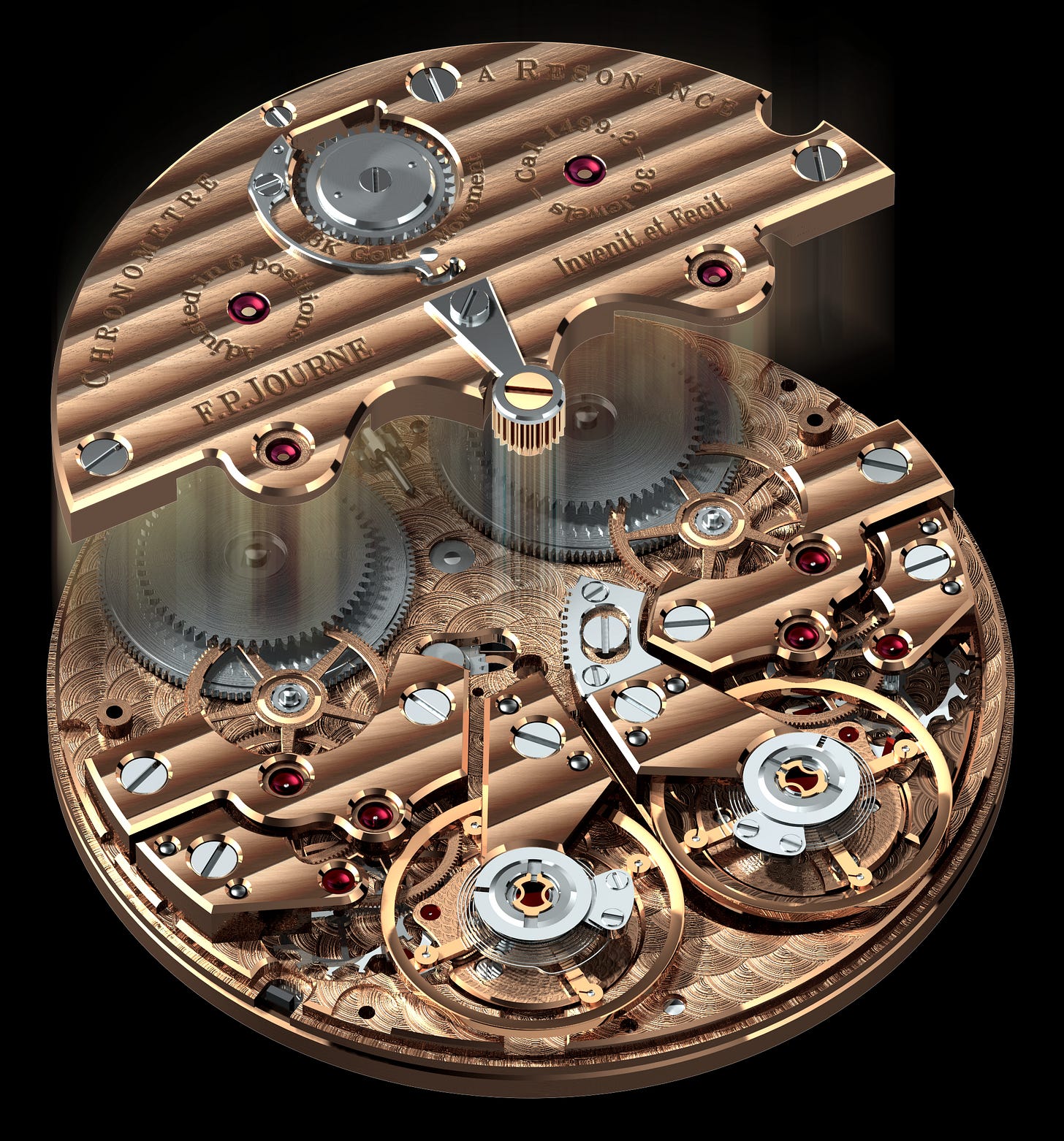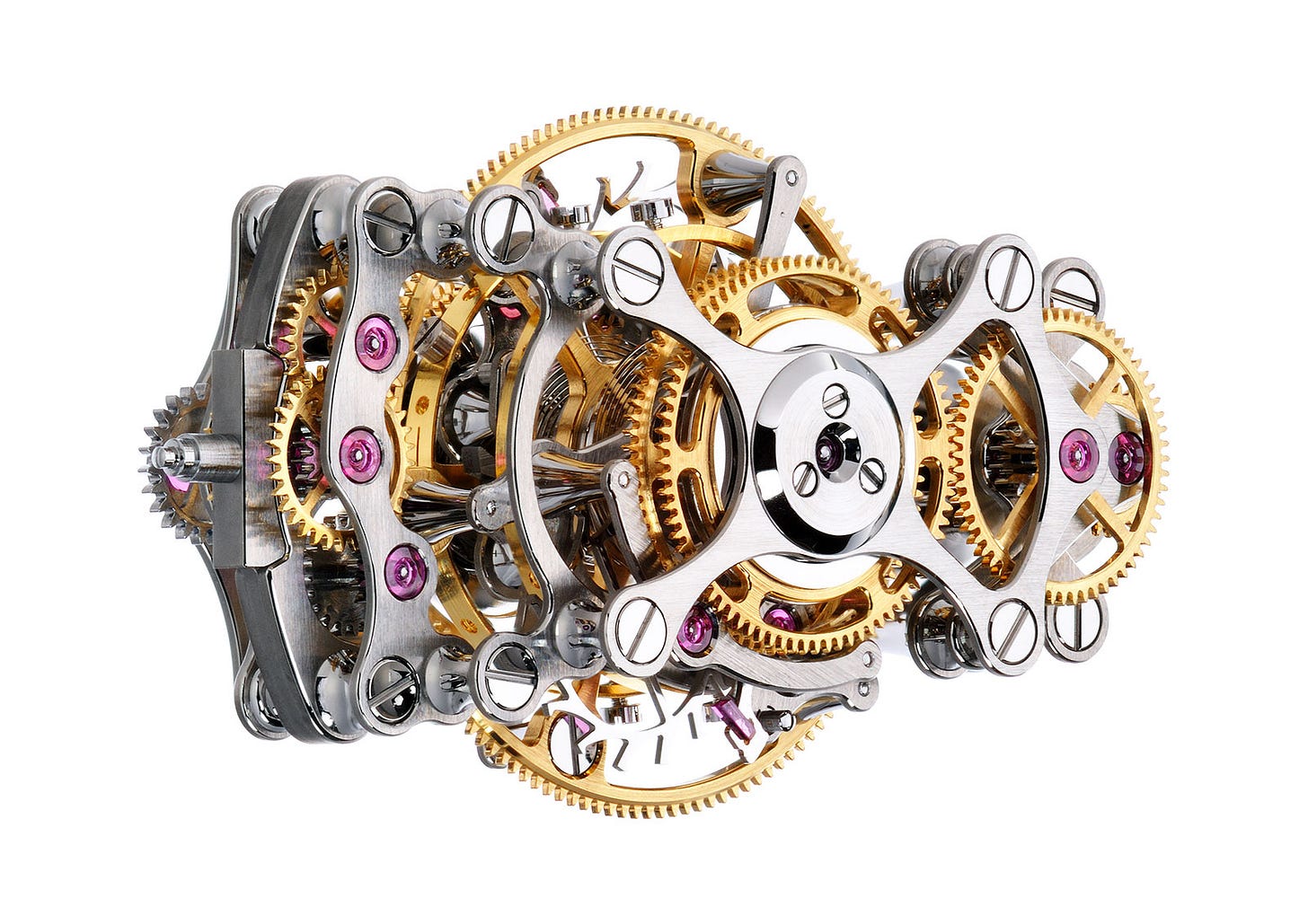In the realm of horology, the enigma of resonance has long been a source of both wonder and debate. It was Christiaan Huygens, idle in his sickbed, who first observed the principle - two oscillating systems, brought into close proximity, will begin to oscillate in a synchronised manner. This phenomenon, known as resonance, has inspired countless clockmakers throughout the centuries, many seeking to harness its power to improve the accuracy and stability of timepieces.
Antide Janvier, a French clockmaker, was renowned for creating “double pendulum” or “resonance” clocks, incorporating two entirely separate movements. But it was Abraham-Louis Breguet, a pioneer in the field of watchmaking, whose experiments with resonance were among the first of their kind. Breguet believed that by using two balance wheels in a timepiece, he could achieve greater accuracy and stability, as the two wheels would naturally begin to oscillate in a synchronised manner. However, Breguet's experiments were met with mixed results, as the concept of resonance was still not fully understood at the time. To date, only three resonance pocket watches of his have surfaced.
In more recent years, it has been François-Paul Journe who became captivated by the idea of resonance. He succeeded in bringing Breguet’s idea of using two balance wheels into a commercial wristwatch form in 2000 having been experimenting with the concept since the mid 80s.
Journe's incorporation of resonance in wristwatches has been met with much interest, and his Résonance watches are some of the most novel, desirable and expensive on the market. But he is not alone in his endeavours, other clockmakers like Haldimann, Halter and Armin Strom (and some more obscure) have produced versions of resonance watches. But the question remains, does the phenomenon truly work?
The enigma of resonance in horology persists, a riddle shrouded in the mists of uncertainty. Some scoff at the idea, deeming it naught but an illusion, a mere fluke of chance. Others, however, maintain that it is a true phenomenon, a veritable grail to be sought after.
The theory goes that force is transmitted through the various mountings and fixings of the oscillator, causing the two systems to resonate in harmony. The clock pendulum offers a clear demonstration of this principle, with the unbalanced mass exciting a relatively flexible structure. Even in a vacuum, this effect has been observed, eliminating any influence of air flow.
But in the case of a watch balance, the wheel is finely balanced, the reactive force provided by a delicate hairspring. If the pivots, mountings, and fixtures are proportionally highly rigid and higher inertia, they offer little to no opportunity for the transmission of force through, for example any stiff cock or bridge, to elicit resonance. However, when the balance is mounted within a tourbillon cage, with the abundant and aggressive start and stop of the cage, there exists ample opportunity for synchronising excitation to occur (Haldimann and Halter); or if the springs are linked (Armin Strom).
So let us examine the Breguet approach now made in modern form by our favourite japester Journe. A subject of fascination and intrigue with no clear way of working. So what are we really seeing when we look at it? Is the resonance they claim to achieve real or simply an illusion?
I believe that resonance in wristwatch horology overall can, at least in part, be an illusion. It is simply the case that when two balance wheels are timed together with close precision, there will naturally appear to be long periods of synchronous operation. This is due to the "beat" frequency difference between the two balance wheels. In the case of balance wheels differing in rate by 5s/d (which I have read is what Journe demands) the beat frequency is 1/5760 Hz*. In other words, the balances will appear synchronised, or as good as to the eye, over a very long period, repeating every 96 minutes or so, regardless of any real resonance coupling.
And lo, the delicate dance of balance wheels, in their synchronicity a simulacrum of cosmic harmony. Though unseen forces may tug and twist, causing moments of dissonance, to the observer's eye they remain in near-perfect synchrony, a repeating pattern every 96 minutes or so. But let us not be fooled by appearances, for the true nature of reality is a complex interplay of probabilities and wave-functions. The mathematics of superposition reveal that, though the wheels may appear more than ‘50%’ together for nigh on two-thirds of the time, the true nature of their entanglement is far more intricate, with the watch appearing in more than ‘70%’ sync for half the time!
The beauty of this magical misdirection is that a story can be made to suit. If the balance wheels are observed to be out of resonance, the magician can say, "Wait, they have been disturbed! But, by the power of resonance they will recover!" Lo and behold, some minutes later the next beat cycle will start to bring them back in sync. "There you are, you see!"
Breguet's work on resonance in the late 1700s and early 1800s would not have been properly informed by this science considering that Thomas Young first mathematically described interfering frequencies in 1807 and Dopper did not explain beat frequency until 1842 by which point Breguet was long dead. I wonder if Breguet sadly never really understood what might have been confounding and misleading him.
On the other hand, Haldimann, Halter and Armin Strom have approached this whole field in a more concrete way. In their watches, the two oscillators are directly coupled, meaning that they are physically linked to each other. This direct coupling allows for a true resonance to occur, as the two oscillators are able to influence each other in a meaningful way.

The existence of the ‘beat’ effect helps support and reinforce the storytelling giving signs that resonance is present but is actually a misleading side-effect with the same apparent visual outcome. For the moment the only wristwatches we can be truly sure deliver robust resonance deliver it through direct coupling of the oscillators.
*Arriving at the beat frequency:
3 Hz movement with 5s/d difference in rates.
Beat frequency = Frequency of balance 1 – Frequency of balance 2
Frequency of balance 1 = 3 Hz
Frequency of balance 2 = 3 x (86400/(86400+5)) Hz
Beat frequency = 1/5760 Hz
An oscillation with a period of 96 minutes.






